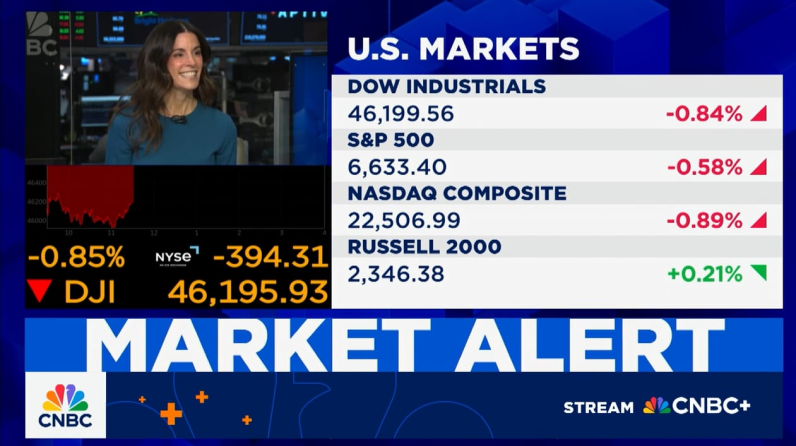

The Trump administration’s “big, beautiful” tax and spending bill has taken a significant step forward in Congress. Below is a summary of the major tax provisions.
On Thursday, May 22, the U.S. House of Representatives narrowly passed the President’s legislation, advancing it to the Senate for likely intense negotiation and debate. While adjustments are possible, the bill includes several tax provisions with significant implications for taxpayers.
Here are some key elements:
- Estate, Gift and Generation-Skipping Tax Exemption: The exemption would increase to $15 million (up from $13.99 million), creating additional opportunities for tax-efficient wealth transfer to the next generation. The change would be permanent and indexed for inflation.
- Individual Tax Rates: All individual tax rates, previously set to expire after the 2025 tax year, would be extended permanently. Additionally, the top marginal income tax rate for the wealthiest earners would remain unchanged at 37%.
- SALT Cap Adjustment: In 2025, the State and Local Tax (SALT) deduction cap would rise from $10,000 to $40,000 for single filers and married couples filing jointly, phasing out for those with modified adjusted gross incomes (MAGI) above $500,000.1 Starting in 2026, the proposal would also restrict the use of Pass-Through Entity Taxes (PTETs), designed by states to help certain pass-through business owners bypass the individual SALT deduction limit.
- Itemized Deduction Limitation for the 37% Tax Bracket: The bill would introduce limits on itemized deductions for higher-income taxpayers, restricting the effective value of any itemized SALT deduction to a 32% income tax rate benefit. All other itemized deductions would be capped at an effective income tax rate benefit of 35%.
- Tax Relief for Workers and Seniors: The bill reflects several campaign promises aimed at easing the tax burden for workers and seniors, effective for tax years 2025 – 2028. Qualified employees earning less than $160,000 (adjusted annually for inflation) would not be taxed on tips or overtime pay during this period. Additionally, taxpayers would be able to deduct up to $10,000 of auto loan interest for cars manufactured in the U.S., subject to phaseouts for those with MAGI exceeding $100,000 (single filers) or $200,000 (married couples filing jointly). Seniors aged 65 and older would also benefit from an increased standard deduction of $4,000, intended to offset the taxation of Social Security benefits.
- Benefits for Small Business Owners: The section 199A deduction would permanently increase from 20% to 23%, offering additional relief for small business owners. The phaseout rules for Specialized Service Trade or Business owners would be adjusted, ensuring higher-income individuals are not automatically excluded from the deduction beyond certain thresholds.
- Child Tax Credit: The child tax credit would increase from $2,000 to $2,500, effective from 2025 through 2028. The credit would retain existing income phaseout thresholds ($200,000 for single filers and $400,000 for joint filers), with phaseouts continuing at $50 for every $1,000 of adjusted gross income above those limits.
- Trump Account: A new tax-advantaged savings vehicle, known as the Trump account, is proposed to help children build savings for early adulthood expenses such as education, starting a business or buying a home. These accounts would be seeded with an initial $1,000 federal government contribution for children born between 2025 and 2028 and allow private contributions of up to $5,000 annually from birth through age 17. Funds in the account would grow tax-deferred, with qualified withdrawals taxed at long-term capital gain rates. Withdrawals would be restricted until age 18, after which funds could be accessed in phases.
- No Changes to Key Tax Provisions: The bill maintains the current taxation of carried interest income, keeps the top income tax rate unchanged, and does not repeal the estate tax.
- Impact on University Endowments and Private Foundations: Universities could face significant new costs under the proposed legislation. The excise tax on net investment income for universities could increase from 1.4% to as much as 21%, depending on endowment size and student population. Private foundations would see new excise tax rates based on asset size, ranging from 2.78% for those with assets between $50 million and $250 million; 5% for those with assets between $250 million and $5 billion; and 10% for those with assets more than $5 billion. Private foundations with less than $50 million would retain the current rate of 1.39%.
The current tax bill offers tangible benefits for many taxpayers while presenting potential challenges to certain entities and institutions. As the Senate begins deliberations, the tension between extending the 2017 tax cuts and addressing fiscal discipline is likely to remain high. We will continue to monitor developments closely and provide updates as the legislative process unfolds.


INSIGHTS
CIO Notebook: Powell Plays the Middle as Fed Cuts Rates

MARKET COMMENTARY
Giving Thanks for Market Strength

INSIGHTS
CIO Notebook: September U.S. Non-Farm Payrolls Further Complicate the Narrative

VIDEO
Holly Newman Kroft Featured on CNBC’s Money Movers November 18

VIDEO
Plan for Peace of Mind with Our Estate Planning Organizer

MARKET COMMENTARY
Some Tricks, More Treats

INSIGHTS
CIO Notebook: Markets Rattled as Fed Leans Hawkish
REPLAY
Private Wealth Investment Outlook 4Q25
INSIGHTS
CIO Notebook: September Core CPI Comes in Late but Light
INSIGHTS
Charitable Fundraising: Moving Beyond Cash
INSIGHTS
The ‘Disruptive Ds’ Powering Commodities Markets
INSIGHTS
Expanding Horizons in Fixed Income
INSIGHTS
Year-End Planning: Key Considerations for 2025 and Beyond
1For tax years between 2026 and 2033, the $40,000 and $500,000 amounts would be increased by 1% per year. The SALT cap would remain at that 2033 level for subsequent tax years.
This material is provided for informational and educational purposes only and nothing herein constitutes investment, legal, accounting or tax advice, or a recommendation to buy, sell or hold a security. This material is general in nature and is not directed to any category of investors and should not be regarded as individualized, a recommendation, investment advice or a suggestion to engage in or refrain from any investment-related course of action. Investment decisions and the appropriateness of this material should be made based on an investor’s individual objectives and circumstances and in consultation with his or her advisors. This material is not intended as a formal research report and should not be relied upon as a basis for making an investment decision. The firm, its employees and advisory clients may hold positions within sectors discussed, including any companies specifically identified. Specific securities identified and described do not represent all of the securities purchased, sold or recommended for advisory clients. It should not be assumed that any investments in securities, companies, sectors or markets identified and described were or will be profitable. Neuberger Berman, as well as its employees, does not provide tax or legal advice. You should consult your accountant, tax adviser and/or attorney for advice concerning your particular circumstances. Information is obtained from sources deemed reliable, but there is no representation or warranty as to its accuracy, completeness or reliability. All information is current as of the date of this material and is subject to change without notice. Any views or opinions expressed may not reflect those of the firm as a whole and Neuberger Berman does not endorse any third-party views expressed. Third-party economic or market estimates discussed herein may or may not be realized and no opinion or representation is being given regarding such estimates. Neuberger Berman products and services may not be available in all jurisdictions or to all client types. The use of tools cannot guarantee performance. Diversification does not guarantee profit or protect against loss in declining markets. As with any investment, there is the possibility of profit as well as the risk of loss. Investing entails risks, including possible loss of principal. Investments in hedge funds and private equity are speculative and involve a higher degree of risk than more traditional investments. Investments in hedge funds and private equity are intended for sophisticated investors only. Unless otherwise indicated, returns reflect reinvestment of dividends and distributions. Indexes are unmanaged and are not available for direct investment. This material may include estimates, outlooks, projections and other “forward-looking statements.” Due to a variety of factors, actual events may differ significantly from those presented. Investing entails risks, including possible loss of principal. Past performance is no guarantee of future results.
Tax planning and trust and estate administration services are offered by Neuberger Berman Trust Company. “Neuberger Berman Trust Company” is a trade name used by Neuberger Berman Trust Company N.A. and Neuberger Berman Trust Company of Delaware N.A., which are affiliates of Neuberger Berman Group LLC.
Neuberger Berman Investment Advisers LLC is a registered investment adviser. The “Neuberger Berman” name and logo are registered service marks of Neuberger Berman Group LLC.